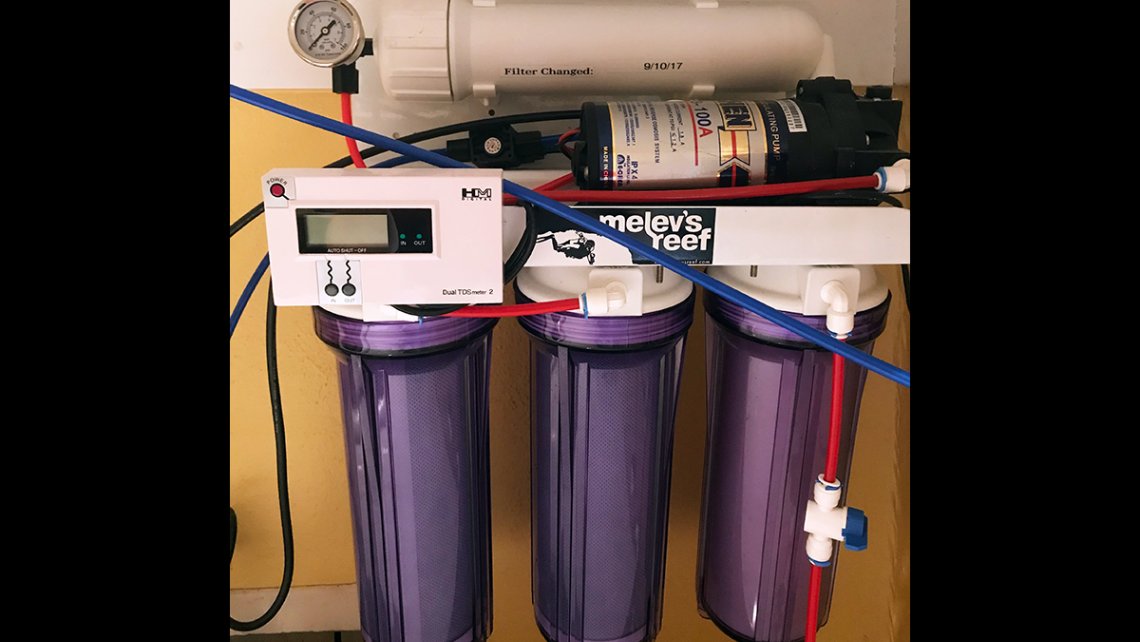Why should you use RO/DI water?
When getting into the hobby of marine tanks, the basic consideration is water. Without it, nothing in your tank would live for long. Compared to freshwater tanks, marine tanks need excellent water quality to maintain success. So what water is available to the average person?
-
Tap Water - anything can be in your tap water, and most are undesirable for your tank.
-
Well Water - similar to above, with the risk of metals and high alkalinity
-
Distilled Water - available in many food stores, supposedly pure.
-
Reverse Osmosis &/or De-Ionized water - available as above, as well as at your LFS
One of the things about water is you simply don't know what is in it until you test it yourself. Fluoride, Chlorine, Chloramines, Nitrates, Phosphates, and even metals.... none of which can be added to your marine tank safely. Many of these compounds will create nuisance algae and may even lead to premature death of various livestock. Buying water from stores that promise it is filtered may be safe, but you don't really know when they changed their filters, do you? The water at the LFS may be safe to use, if they are keeping up with the schedule of changing their filters. Look in the LFS display tanks. Are they algae free, or is there an outbreak in many tanks? If you see a lot of algae, their water might not be the best choice to use.
If you opt to use tap water because it saves you money, you'll need to add some type of dechlorinator to protect your livestock from chlorine. Seachem's Prime is excellent, and I used it for years. But how much does that cost over time? And how much is your time worth, when you have to spend hours and hours battling green hair algae or worse?
Getting an RO/DI unit of your own is the best decision you will ever make. The up front cost of a unit can vary depending on where you buy it. There are many styles with a variety of options, and they can range from about $100 to $300 or more. Many choose to buy units from vendors on Ebay, and others shop the various online stores. When shopping, here are a few things to consider:
Gallons Per Day - How quickly do you want to make water? A 100gpd unit will produce a little over 4 gallons an hour under ideal conditions. When you need water in a hurry, you don't want to be waiting for a 25 or 50gpd unit to produce water!
Filter Sizes - The common filter size is 10", and if you buy a unit with that standard size, you'll be able to shop around for refill cartridges from many vendors. If the filter sizes are unique, you will have to continue to buy them from the original vendor and pray he stays in business or at least provide you with another resource if he doesn't continue selling them.
Clear Canisters - If you get a unit with solid white 'sumps', you can't tell what is going on. Clear acrylic sumps allow you to see if water is in each section, and you can visually inspect the unit to see when something needs changing.
The benefit of having a unit in your home is that you can make pure water as you need it. Installation takes about 10 minutes. You won't have to carry heavy containers of water (5 or more gallons weighs a lot!) out of the store, load it into your vehicle, then unload it at your house and carry it to your tank. Another benefit is you know exactly when your filters were changed last. You can even test your unit to make sure your water is safe. A TDS meter will measure the water quality -- zero is the goal. A cheap Chlorine test will tell you if your carbon filters need replacing. The DI cartridge changes colors from black to brown indicating when it has been consumed. Finally, if the output is remarkably slower than when you first installed it, it is time to replace filters or possibly the membrane.
An additional benefit with some units is the ability to make your own drinking water, by collecting water from the RO section (before the DI can process it). Clean drinking water is a must in most homes, and a RO/DI unit can provide that 24 hours a day.
Maintenance is easy. Change the filters (sediment and carbon) every 6 months and the DI once a year. The RO membrane should be good for 3 to 5 years. There is very little that can go wrong with a unit, but if you do run into a problem, the vendor or local club members can quickly help you get that resolved.
If you add up the cost of the water you are purchasing (or the chemicals you buy to dechlorinate your tap water), you can see that in very little time an RO/DI unit will pay for itself. And your marine tank will look the better for it!
Ready to make your own pure water? Purchase one from Melev's Reef!












